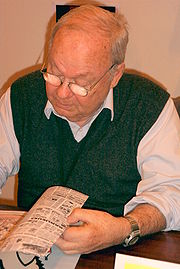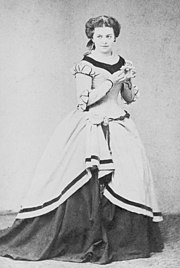Karl Malden's Human Design Chart
Design
Design
Personality
Chart Properties
Your Cross represents the specific theme of your life. This cross embodies your unique potential & the lessons you're here to learn, providing a roadmap to fulfilling your life purpose.
We use the UTC birth time and date to do the calculations required to generate your Human Design chart.
Buy Tokens
Pay as you use, no expiry and no subscription required.Karl Malden's Biography
American actor, commercial pitchman, writer, and president of the Motion Picture Academy. Malden made a film career playing the Everyman. The versatile actor played priests to gangsters, heroes to heavies, ordinary, decent men just trying to survive in the world. Struggling for work in the theater in the late ’30s, Malden’s career took off in the ’40s with film roles directed by friend Elia Kazan. After playing in the original stage company of “A Streetcar Named Desire,” Malden landed the role on film. He received the Best Supporting Actor Oscar for the role with his co-star Vivian Leigh in 1952. He wrote his autobiography with his screenwriter daughter, Carla, “When Do I Start” published by Simon and Schuster November 1997. As president of the Motion Picture Academy, he came under heat by the motion picture community for the awarding of Elia Kazan, a controversial figure in his role in the Hollywood black-list, a lifetime Academy award in the ceremony of 1999.
Malden’s father, Petar Sekulovich, emigrated to America stopping at Ellis Island on 4/18/1906. The Serbian immigrant wanted to live in San Francisco but ended up in the Serbian community of Chicago. Malden was born in Chicago but his father moved the family to Gary, Indiana when he was five-years-old. His father supported the family for 38 years driving the milk wagon in town. Raised speaking no English, Malden found school in Gary frustrating and difficult. He could not understand what English words meant nor how to spell words. Malden’s love for the theater stemmed from his father’s dedication to staging Serbian productions in Gary, Indiana. As a teen, Malden appeared as a pasha in many of his father’s stage plays.
In high school, he excelled at basketball, winning the championship game. He played the lead in his senior class play, Shaw’s “Arms and the Man.” He won a scholarship to Arkansas College in Batesville, Arkansas but turned the award down when he discovered that he would have to play basketball and football. He went back to Gary, Indiana and worked at a steel mill. Working beside the open hearth furnaces propelled Malden to re-evaluate his career choice. For Malden, acting could be the only possible escape from a hellish existence in a steel mill. Saving $300 dollars in three years, he arrived without references at the Goodman Theater in Chicago. The teachers allowed the young man to stay but he suffered incredible financial hardships, sleeping in the bus station and school basement and stealing sandwiches from other student lunch bags because he was so hungry. In 1936, he graduated from the theater school but could not afford the five-dollar diploma. He went back to Gary, Indiana and drove the milk wagon like his father.
It seemed that his destiny was never to be an actor, when an acquaintance from the Goodman Theater called him in Gary and offered him a part in a play in New York City. Malden made his Broadway debut in “Golden Boy,”1937, under the direction of Elia Kazan and the famous Group Theater of New York. He received good notices for his role but Malden was not able to capitalize on his success. He moved back to Gary to earn money in the summer of 1937. In the fall of 1938, he returned to NYC but struggled to get theater work. He made endless rounds of casting offices between 1938-1940, acting in eight plays that fizzled on the stage. He considers this time period his most chaotic and confusing, almost giving up his acting career for the seduction of a regular, stable, 9-to-5 office position. His dry period at its most dispiriting only confirmed to himself how much he needed to be an actor. With his resolution fixed, in 1940, Malden went to Hollywood and made his film debut in “They Knew What They Wanted.”
He went into the Air Force during World War II. After the war, he went back to New York. Kazan cast Malden in “A Streetcar Named Desire” on Broadway in 1947. His career began to accelerate after his excellent reviews by theater critics. He returned to Hollywood to make the films, “Ruby Gentry,” 1952, “On the Waterfront,” 1954, “Baby Doll,” 1956, “Pollyanna,” 1960, “Birdman of Alcatraz,” 1962, “Gypsy,” 1962 and “Patton” in 1970. In 1957, he directed a film entitled “Time Limit.”
With a kindly, craggy face and a bulbous nose that he had broken twice in his teens, his small, bright blue eyes portray intelligence and sensitivity that is always appealing. Malden recognized his limitations as a leading man and settled for playing strong supporting players. He appeared in a dozen TV movies, earning an Emmy award in 1984 for his role in NBC’s “Fatal Vision.” He played Lt. Mike Stone opposite Michael Douglas in the ’70s TV cop show “The Streets of San Francisco” which lasted five years. He appeared as the pitchman for the American Express Traveler’s Checks warning viewers “Don’t leave home without it.”
In 1990, Malden was elected President of the Motion Picture Academy. An excellent fund-raiser, he raised over $12 million for the Center of Motion Picture Study in Beverly Hills, CA. No one is more surprised than Malden on his ability to preside over the motion picture academy. He never in his wildest dreams thought that he would be the president of anything. The biggest corporate contributor to the Center of Motion Picture Academy is the American Express Corporation.
Malden met his wife actress Mona Graham at the Goodman Theatre in Chicago. They married in December 1938. The couple was so poor their wedding dinner was spent at the Chock Full O’Nuts coffee shop where they had a total of 80 cents between them. The couple had two children.
At 86, the actor says, ” I’m a workaholic. I love every movie I’ve been in, even the bad ones, every TV series, every play, because I love to work. It’s what keeps me going.”
Malden died at his Los Angeles home at age 97 on July 1, 2009.
Link to Wikipedia biography
Your Cross represents the specific theme of your life. This cross embodies your unique potential & the lessons you're here to learn, providing a roadmap to fulfilling your life purpose.
We use the UTC birth time and date to do the calculations required to generate your Human Design chart.






